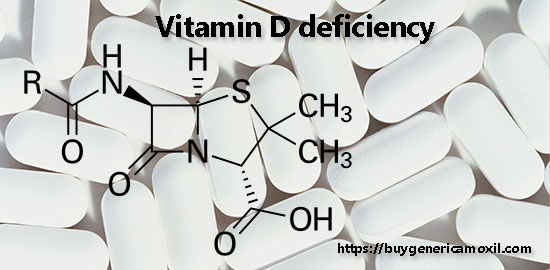Vitamin D deficiency and cystitis: inflammatory diseases of the lower urinary tract (cystitis) are among the most common urological diseases in outpatient practice. As is known, women suffer from them 30 times more often than men (the incidence rates among women are 500-700 episodes per 1000, while among men aged 21 to 50 years, the same indicator is only 6-8 cases per 1000). Every year in the United States, this diagnosis is made to three million people every year, and in the UK, about 50% of women have experienced symptoms of acute cystitis at least once in their lives. After an episode of acute cystitis, 50% of women develop a relapse within a year, 27-30% of women relapse within six months, and 50% of patients have relapses more than three times a year, which is a criterion for frequently recurrent chronic cystitis.
According to the available epidemiological data, at least 10-25% of all women suffer from recurrent infections of the lower urinary tract, while the disease is characterized by a persistent clinical course, frequent and prolonged relapses, the development of pronounced psychoemotional disorders and prolonged or repeated disability, which sharply reduces the quality of life of women, often combined with their severe medical, social and psychological maladaptation
The role of vitamin D and its deficiency in the pathogenesis and therapy of lower urinary tract infections
Currently, the hormonal-metabolic concept of vitamin D as a multifunctional steroid hormone D has been firmly formed in the scientific literature, which, together with its extensive receptor apparatus in the cells of almost all tissues of the human body, forms a single D-endocrine system that closely interacts with other hormonal and non-hormonal systems, primarily with the system of steroidogenesis, glucose-insulin metabolism, reproduction and immunity. Since hormone D of all sex steroid hormones regulates the largest number of genes (about 3000, or about 3-5% of the entire human genome), its fundamental role in ensuring normal human life processes throughout his life is completely clear. Currently, our idea of a vitamin (hormone) D has advanced revolutionarily, and its newly discovered so-called non-classical (extra-bone) effects continue to be actively studied.
It is known that in case of infection of the lower genital tract, the main impact of the microbial agent is taken by the urothelium, in which glycosaminoglycans (mucopolysaccharides) are synthesized – the most important components of the intercellular matrix of the mucous membranes and skin, consisting mainly of hyaluronic acid and its salts and performing local protective functions, and damage to the glycosaminoglycan layer of the urothelium is considered one of the important causes of relapse of infection. At the same time, it is known that the synthesis of glycosaminoglycans in the urothelium of the bladder in women and men is regulated by sex steroid hormones, and vitamin D, by regulating the level of expression of steroidogenesis genes, in turn affects both steroidogenesis and directly on the synthesis of glycosaminoglycans.
Uropathogenic E. coli in urinary tract infections can violate the hematourothelial barrier due to a violation of the regulation of occludin and claudin 14 in the epithelial cells of the bladder, as it happens with interstitial cystitis. In addition, low plasma levels of vitamin D (vitamin D deficiency) are significantly associated with Clostridium difficile infection, increasing the severity of its clinical course . Similar studies are available regarding the ability of vitamin D to inhibit the growth of the tuberculosis bacillus Mycobacterium tuberculosis.
Conclusion
Infections of the lower urinary tract remain currently an urgent medical and social problem due to their pronounced tendency to relapse, which determines frequent episodes of disability and increased costs in this regard for the health care system. The existing approaches to the pharmacotherapy of infection today often no longer provide the necessary level of quality of life for patients, so today an active search is underway for new effective pharmacological options aimed at improving the effectiveness of their treatment. It should be noted that these pharmacotherapeutic options should have a sufficient level of safety, since the frequency of side effects during standard antimicrobial chemotherapy of lower urinary system infections remains at a high level.

Moreover, in modern conditions of growing resistance of uropathogens, when there are practically no new classes of antibiotics being created, it is necessary to look for other ways to solve the problem that are not related to this class of drugs. This literature review has shown that currently the most promising direction for improving the effectiveness of treatment may be the elimination of vitamin D metabolism disorders, the deficiency of which is detected with a high frequency in patients with this infection and has a significant negative aggravating effect on the course of the infectious and inflammatory process in the lower urinary tract, the state of the immune reactivity of the urinary tract and the body as a whole, local endothelial and secretory functions, the state of the antioxidant system of cell protection and many other cellular mechanisms, directly or indirectly involved in the implementation of the effects of the microbial factor, on which the outcomes of infectious inflammation largely depend. At the same time, vitamin D, being a steroid hormone, is normally synthesized in human skin keratinocytes, that is, it is an endogenous (natural) molecule of a multifunctional orientation.
The volume of available scientific publications devoted to the role of vitamin D and its deficiency in the disease has not yet reached its critical base for the formation of systematic analyses and meta-analyses of a high level of evidence, however, the already available results of clinical and experimental studies allow us to consider vitamin D as an independent predictor of an increased risk of INMP, and correction of its deficiency as a promising pharmacotherapeutic option for improving the results of treatment, which, unfortunately, leaves much to be desired.